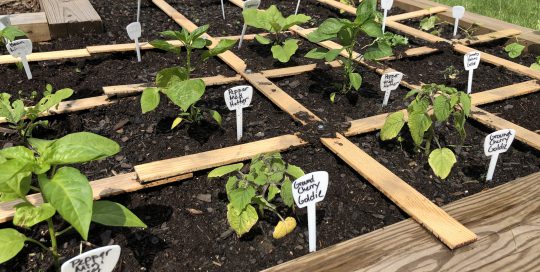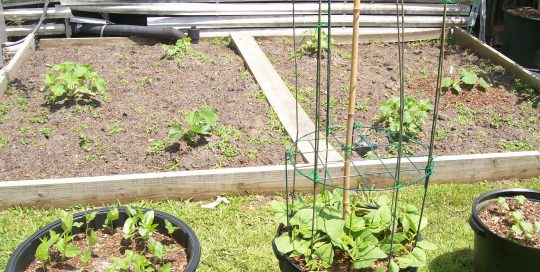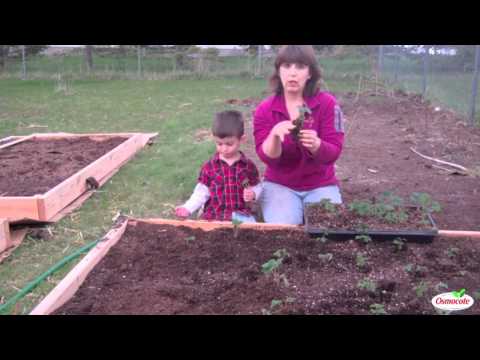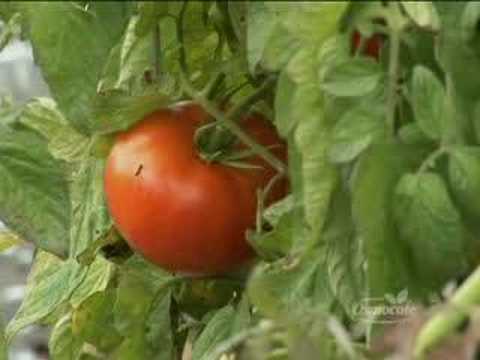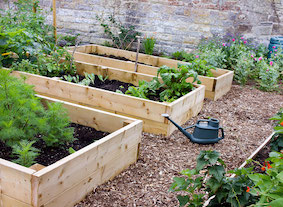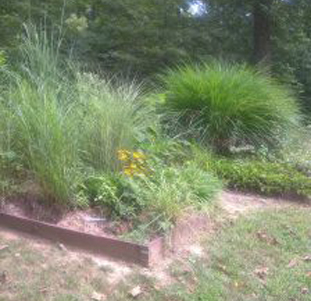How to build a raised garden bed
If you use rocks or bricks it is as easy as stacking blocks. Stack whatever material you’re using at least 6 inches tall and as deep as you wish.
For lumber, a simple 6-inch deep bed is ideal. If you wish to create a deeper bed stack the lumber until you reach the depth desired. Whether you’re building one layer or two, brace the corners with either a 2×2 piece of wood cut to the height of the box, metal corner braces, or purchased corner braces specifically used to build raised beds where the ends of the lumber slip into each piece. If your beds are longer than 6 ft., you’ll also want to add wooden braces at the mid-way point to prevent the wood from bowing out. Whatever the depth of the bed, fill it with the best soil you can find.
Building a raised garden bed – Photo by Amy Grisak
Setting up raised garden beds
Look for an area with over 8 hours of sunshine every day during the growing season.
Once you picked your space, place 6-8 layers of newspaper or cardboard on the ground to help smother out the grass, particularly between the bed and the lawn. It won’t grow through the bed, particularly if it is 12 inches deep or deeper, but for shallower beds, it helps to make sure it doesn’t add unwanted weeds to the garden.
For most of the raised beds, you’ll want to level out an area in order for the bed to be flat. The easiest way to do it is to use a single piece of lumber to set out the general shape. Dig a trench below whatever areas are higher to ensure the structure is level the entire way around. Once the bed is level all the way around, you can begin building.
Best fill materials for raised garden beds
Determining the soil to use to fill a bed is one of the great challenges. When I built my beds, I was fortunate in that I could order sandy loam by the dump truck load. It took 14 dump trucks to fill them all, but the plants thrived in the rich soil.
For home gardeners, a little planning is helpful. Using only potting soil or compost creates an imbalance in the system. If you can, use local bulk soil, as long as it is guaranteed to be weed free. There are also bagged garden soil options. Alternatively, make a mix of half compost and half coco coir or peat moss. If you use compost, look for different sources to optimize the nutrient balance. I suggest steer or chicken manure. Try to add plant based material if you can.
The other half should be coco coir, which lightens the soil while not messing with the pH so much, or peat moss. The later is less desirable because of environmental considerations. If that’s all you have (or you already have a bale sitting around), use it.
Improving the nutrient levels of raised garden beds
Soil nutrition isn’t something that happens overnight. Adding amendments such as eggshells or gypsum (to prevent blossom end rot), sulphur to counteract a high pH, or Azomite, a mineral supplement, can take months until they break down to where the plants can assimilate it. This is why boosting nutrients is an ongoing process.
To ensure your plants have a healthy start from the beginning, feed them using a water-based fertilizer or a time-released product such as Osmocote. Work it into the soil around the plants when you plant in the spring. Use it again in the middle of the summer to carry through the rest of the season.


